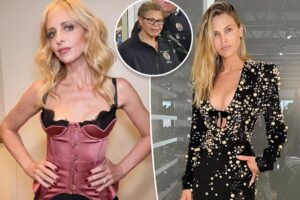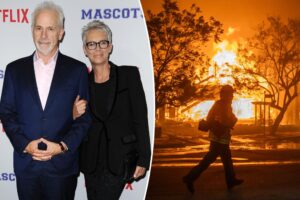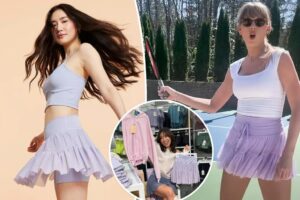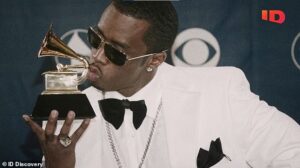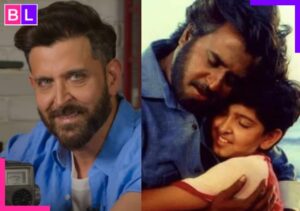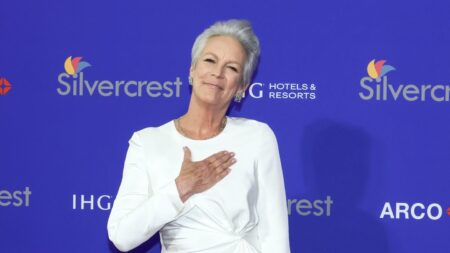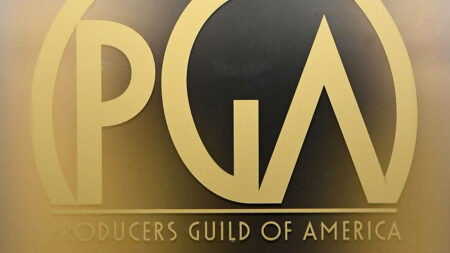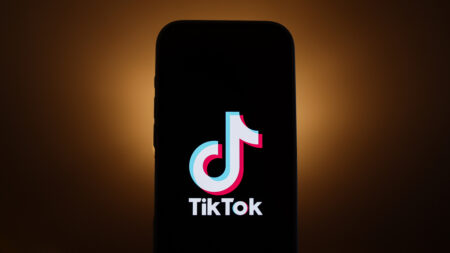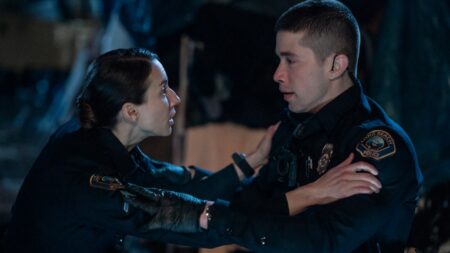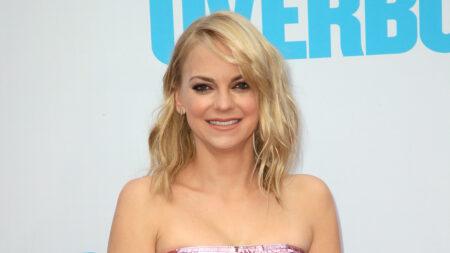There are fancy fashion docs galore, ones to fulfill anyone’s designer lifestyle fantasy. But there aren’t many that will make you weep.
“So you cried? Why?” Diane von Furstenberg asks over Zoom while discussing the new Hulu doc Diane von Furstenberg: Woman in Charge, out June 25. Long considered one of the world’s most glamorous women, the stunning septuagenarian is sprawled languorously on a hotel bed with zero makeup and undone hair, adorned by her signature “In Charge” necklace.
Why tears? Well, for starters, not many documentaries end with their subject visiting their own grave site. “But that’s my favorite part of the film!” she says. “Look, we can’t avoid mortality, so why not embrace it?” She notes that Jane Rosenthal — co-founder of the Tribeca Festival (where the film, directed by Trish Dalton and Sharmeen Obaid-Chinoy, was the opening-night feature) — cried during that part, too. But, says the designer, “I still don’t get the tears.”
“I’ve had a very full life,” says von Furstenberg, who’s already written two autobiographies and is so famous, she’s often simply referred to simply as DVF. “But what I care about now is — is this film inspiring?”
Of that there’s no doubt. The daughter of a Holocaust survivor, she became a European royal by marriage, then started an iconic fashion brand in 1970, after giving birth to two kids. She’s also a cancer survivor, a feminist activist (who honors female leaders at her annual DVF Awards) and a master at staying relevant, from being an early QVC pioneer (after almost losing her business) to making headlines in 2001 with her second marriage to media mogul Barry Diller to launching a collab with Target this year with her granddaughter Talita.
On film, she tells her story warts and all, without a single blink. “I look fairly awful in the film,” she says. “Thank God I looked beautiful when I was young! But not looking good, I think, makes it more attractive. Strength is beauty, too. I believe in healing by story. I’m 77 but I should be 300. The most audacious thing I’ve ever done was being born. My mother weighed 49 pounds when she returned from Auschwitz, when she married my father. Her doctor warned her not to get pregnant — it could kill her. Twelve months later, I was born. Just being alive is triumph for me.”
In the doc, such friends-slash-fans as Oprah Winfrey, Hillary Clinton, Gloria Steinem, Marc Jacobs and Fran Lebowitz rhapsodize over her accomplishments and bravery.
“Lucky for us, Diane saves everything,” filmmaker Obaid-Chinoy tells THR. “She has all her diaries. What’s more amazing is that she kept all her mother’s letters. It was like a ready-made timeline.”
Furstenberg recalls that Obaid-Chinoy first “let me see [the film] two months ago. It was like being at the gynecologist. I went immediately crazy — completely paranoid. Now I’m just accepting it. Listen, my mother created a daughter for whom fear was not an option. ‘Never be a victim!’ she said constantly. That’s how she survived Auschwitz.”
But von Furstenberg tells her story onscreen with just enough vulnerability. “As long as you’re true to yourself, you’re free. That’s the lesson I’ve learned: to share my vulnerability, not as victim, but to heal. Because what’s inspiring is not your success, but the moments of difficulty.”
One such moment followed her wedding in 1969 at age 22. The Swiss royal parents of her husband, Prince Egon von Furstenberg, did not exactly welcome her to the family. “Were they happy to have Jewish blood pollute their aristocratic blood? No. But — don’t be a victim.” Asked about antisemitism in 2024, she replies: “Yes, but we cannot blame everything on antisemitism. It’s too big a conversation, but if Jews are the chosen people, I believe we have to give double.”
Five years into her first marriage, von Furstenberg invented her famed wrap dress, celebrating its 50th anniversary this year. It quickly started selling 24,000 pieces a week, merchandised with the winning motto, “Be a Woman. Wear a Dress.” Cut out of slinky jersey, it worked on everyone — and everyone wanted one. “I had no idea what I was doing,” she admits. “To tell you the truth, wrap dresses were not what I wore the most; I don’t have a thin waist. This wrap dress is a mystery to me, still. Yes, I created it. But I think that it created me. It represented a certain freedom for women wearing suits to work.”
Suddenly, the von Furstenbergs were living the ’70s high life — to the point where Prince Egon (who died of AIDS in 2004) became famed for bisexual hedonism. “If your new husband is this attractive rich aristocrat who happens to be promiscuous, how do you deal with it? I wasn’t going to be a sad little wife,” she says. “I decided, if guys can do that, why can’t women? I’m proud I’ve had a man’s life in a woman’s body. I was once with Ryan O’Neal and Warren Beatty the same weekend!”
“Mick Jagger and David Bowie came over one night to propose a threesome,” she adds. “I thought about it, but decided it would make a better anecdote if I didn’t.” She’s so open about sex in the documentary, it might astound the viewer — but it never shocked her. “I’m a European woman,” she says. “What shocks me is that anyone’s shocked. So what if I had flirtations with women, slept with many men? What’s the big deal? One of my rules is: Never feel guilty. It’s a waste of time.”
DVF met Diller, then president of Paramount Pictures, at a New York party in the ’70s. “It was immediate attraction!” she recalls. In the movie, Diller, now chairman of IAC, acknowledges speculation about the relationship — that people, as he puts it, think “it’s just a marriage of convenience.” Says von Furstenberg, “When we met, Barry was so shy and introverted, but with me he opened up. We’ve been lovers, friends, husband and wife. Our relationship is magical. You’ll see why in his new book. It’s coming out next year, will blow everyone away! Barry’s the star of the film,” she adds with a laugh. “When I first did QVC, everyone thought it tacky. Then Barry bought it. First, we were losers. Next year, we were pioneers. Our destinies are parallel. Now we’re two old people. There are lots of advantages to aging: When you get older, you can get away with saying anything! One of the words used about me in this film is ‘unapologetic.’ I was always in charge of my own life.”
This story first appeared in the June 12 issue of The Hollywood Reporter magazine. Click here to subscribe.
Read the full article here
